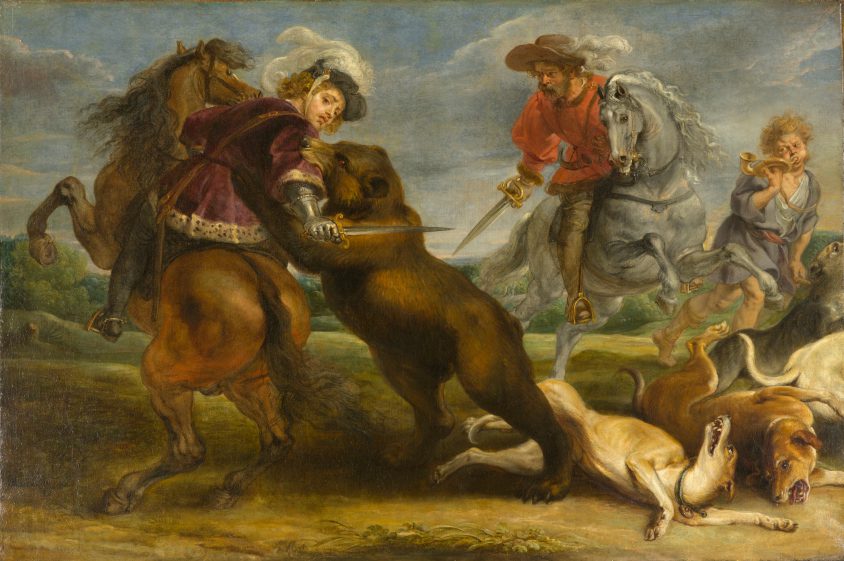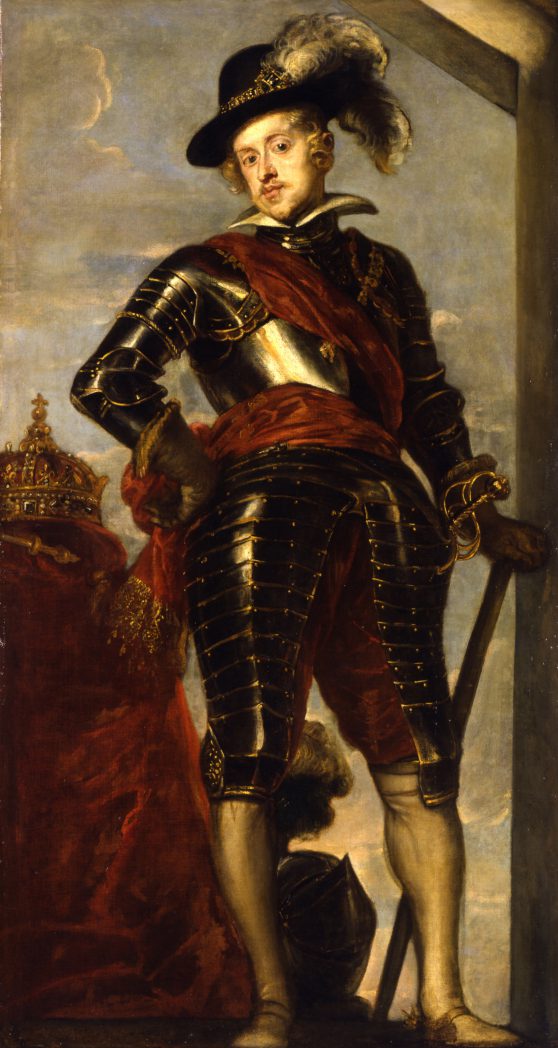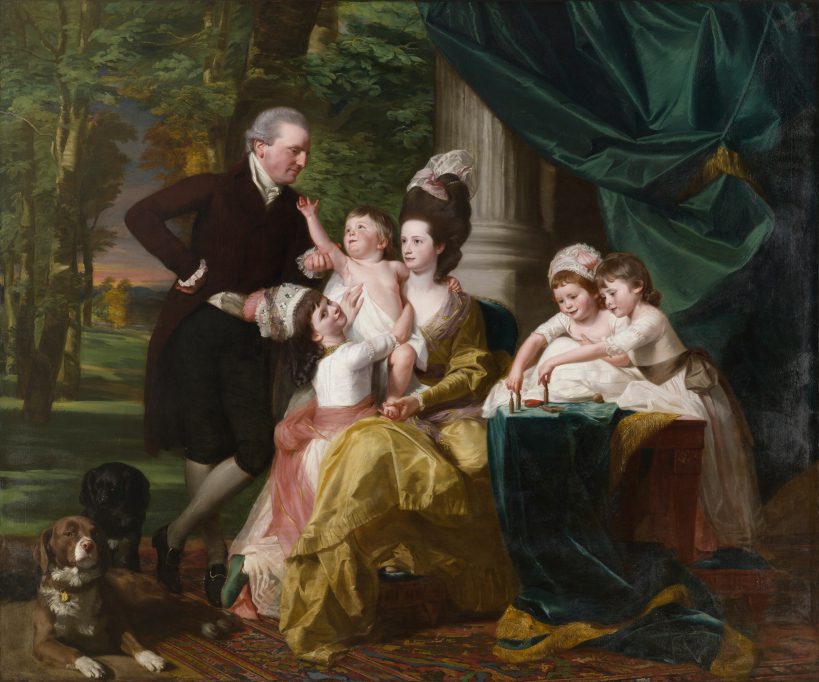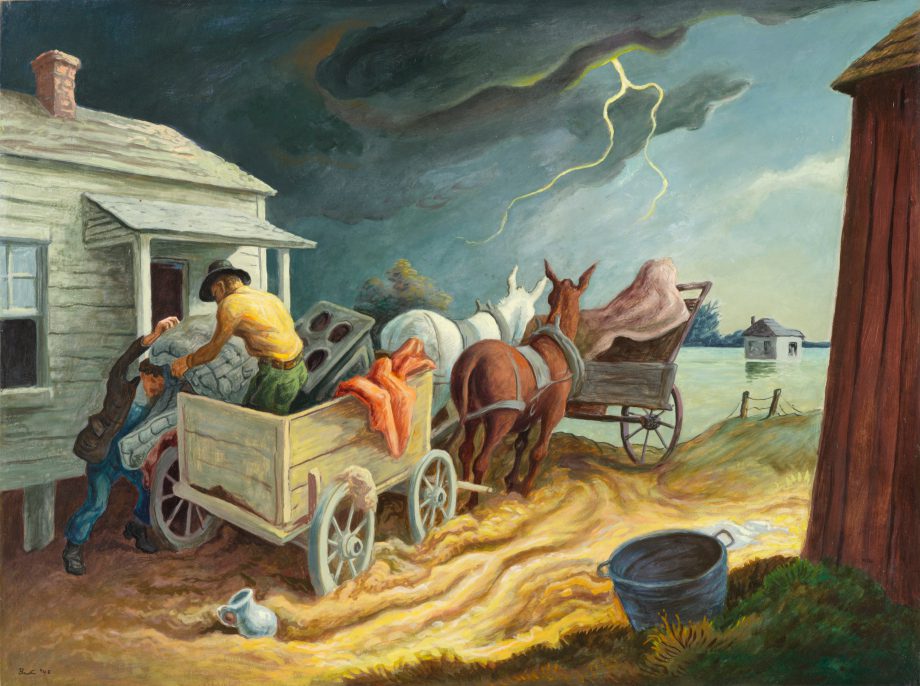A painting’s provenance, its record of ownership, can unveil a trail of power and intrigue, revealing a good deal about human history when a work changes hands as fortunes, nations, or kingdoms rise and fall. Where a picture or sculpture has been tells a lot about who is on top, who has the money, and who loses the money. And a number of NCMA provenance stories start at the top, with the mandates of famous kings or queens. Here are some of the more interesting provenance stories curators have shared with me over the years.

European royalty often dictated a painting’s subject matter, as did King Philip IV, then sovereign of Spain and the Spanish Netherlands, when he commissioned Peter Paul Rubens and Frans Snyders to create eight hunting scenes to hang in the cool summer quarters of his royal palace, the Alcázar, in Madrid. Rubens, at the end of his life and suffering terribly from gout, probably completed the series with some assistance from members of his studio. The NCMA’s dramatic The Bear Hunt (1639–40), one of the few surviving works in this tableau, undoubtedly pleased the king, who was an avid hunter. Disaster struck on Christmas Eve in 1734, when a fire spread through the palace and burned many works of art, including all but two of the hunting scenes. The Bear Hunt survived, though not without damage (even the frame was destroyed by the flames). The painting descended in the Spanish court for many years and in the 19th century turned up in the collection of English statesman and financier N. W. Ridley-Colbourne. Later passing through the hands of several collectors and dealers, it was purchased by the North Carolina Museum of Art in 1952.

The NCMA’s portrait of King Philip IV, by Cornelis de Vos (retouched by Rubens), has a venerable provenance as well. The painting and its companion portrait of Philip III (also in the NCMA collection) were originally part of an elaborate outdoor decoration, planned by Rubens, celebrating the entry of Philip IV’s brother, the governor of the Spanish Netherlands, into Antwerp in 1635. Philip IV’s portrait was later purchased in Belgium by the bold and controversial John Churchill, 1st Duke of Marlborough (1650–1722), a distinguished military general famous for his battles in the War of the Spanish Succession (1701–14) and an ancestor of Sir Winston Churchill.

Over time a painting’s survival story and its list of owners add a patina of respectability to it, though the flattery extends, of course, in both directions. When American newspaper tycoon William Randolph Hearst bought John Singleton Copley’s Pepperrell family portrait (1776), now at the NCMA, he was also buying its provenance, aligning himself with the stature of the English gentry. He purchased the painting from the descendants of the Pepperrell family and hung it proudly in St. Donat’s Castle in Wales, the medieval fortress he had recently bought and lavishly restored. (When George Bernard Shaw visited the castle, he remarked, “This is what God would have built if he had had the money.”) Like Hearst, many American collectors of the early 20th century bought works previously in the possession of such illustrious families as the Borghese, the Medici, or the Rothschilds because that might have put them on equal footing at a time when American wealth was more attributable to oil or railroads or newspaper sales than to nobility. In the late 1930s, during the Great Depression, financial difficulties forced Hearst to put the castle and its extravagant furnishings on the market, and the painting was eventually purchased by the NCMA in 1952.

Beloved comedian Harpo Marx was the first owner of the NCMA’s Thomas Hart Benton painting, Spring on the Missouri (1945), which stayed with Harpo until his death and descended to his adopted son Bill before it went on the art market. One is tempted to speculate on the “mute” comedian’s attraction to the scene portrayed in the painting: did the nobly struggling family in Spring on the Missouri kindle feelings about Harpo’s own family weathering its immigration to America? In any case, American regionalist painters like Grant Wood and Thomas Hart Benton were very popular with other Hollywood collectors such as Cole Porter and film director King Vidor. Their heartland subject matter, celebrating the common man, appealed to elites on both coasts. The sale to Harpo certainly meant something to Benton, as he records it in the chronology of his autobiography, An Artist in America.
Like these paintings, many works at the North Carolina Museum of Art have interesting provenance stories too detailed for a short wall label, so there’s nothing quite like a docent-led tour to uncover a painting’s intriguing backstory. Next time you visit the NCMA, take advantage of the many free tours offered and follow a friendly guide through the galleries.
